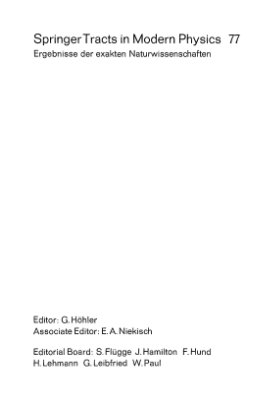Springer-Verlag, 1975, 125p.
The Electrical Resistivity of Pure and Gas Covered Metal Films
Introduction
Experimental
Structure of the Films
The Resistivity of Pure Metal Films
The Temperature Dependence of Resistivity of Pure Metal Films
Resistivity Change Due to Gas Adsorption
Resistivity and Heat of Adsorption
Concluding Remarks
References
How Much Can Auger Electrons Tell Us About Solid Surfaces?
Introduction
The Distribution N (E)
Energy Levels of the Sample
Some Important Interactions
Instrumentation
Auger Transitions
Inspection of an Auger Spectrum
The Qualitative Element Analysis
Steps Towards Quantitative Analysis
Deconvolution
Line Shape and the Density of States
Line Shape and Chemical Environment
Auger Electrons from Compound Solids
The Concept of Cross Transitions
A Potential Example: Cs-C
Metal Oxides
Conclusion
Abstract
Acknowledgement
The Electrical Resistivity of Pure and Gas Covered Metal Films
Introduction
Experimental
Structure of the Films
The Resistivity of Pure Metal Films
The Temperature Dependence of Resistivity of Pure Metal Films
Resistivity Change Due to Gas Adsorption
Resistivity and Heat of Adsorption
Concluding Remarks
References
How Much Can Auger Electrons Tell Us About Solid Surfaces?
Introduction
The Distribution N (E)
Energy Levels of the Sample
Some Important Interactions
Instrumentation
Auger Transitions
Inspection of an Auger Spectrum
The Qualitative Element Analysis
Steps Towards Quantitative Analysis
Deconvolution
Line Shape and the Density of States
Line Shape and Chemical Environment
Auger Electrons from Compound Solids
The Concept of Cross Transitions
A Potential Example: Cs-C
Metal Oxides
Conclusion
Abstract
Acknowledgement

